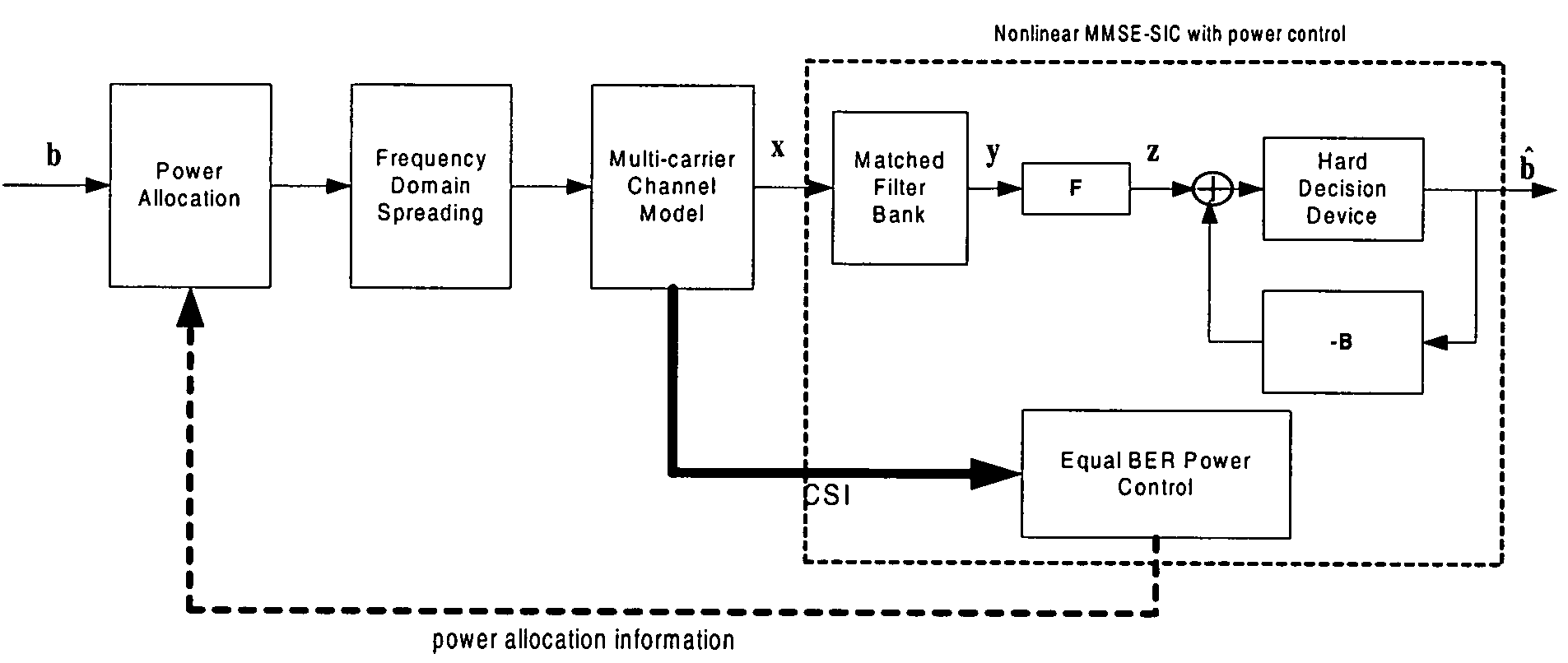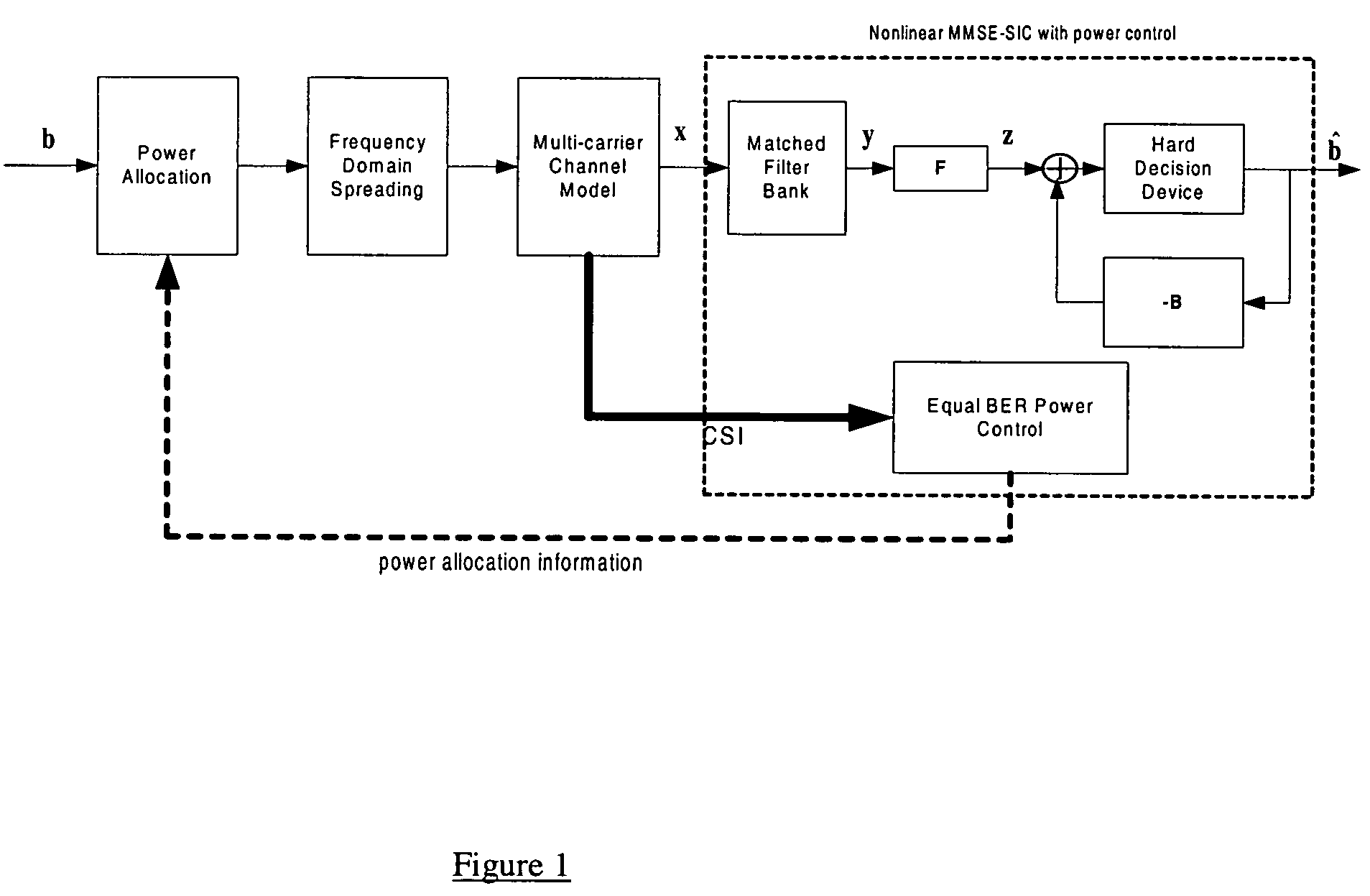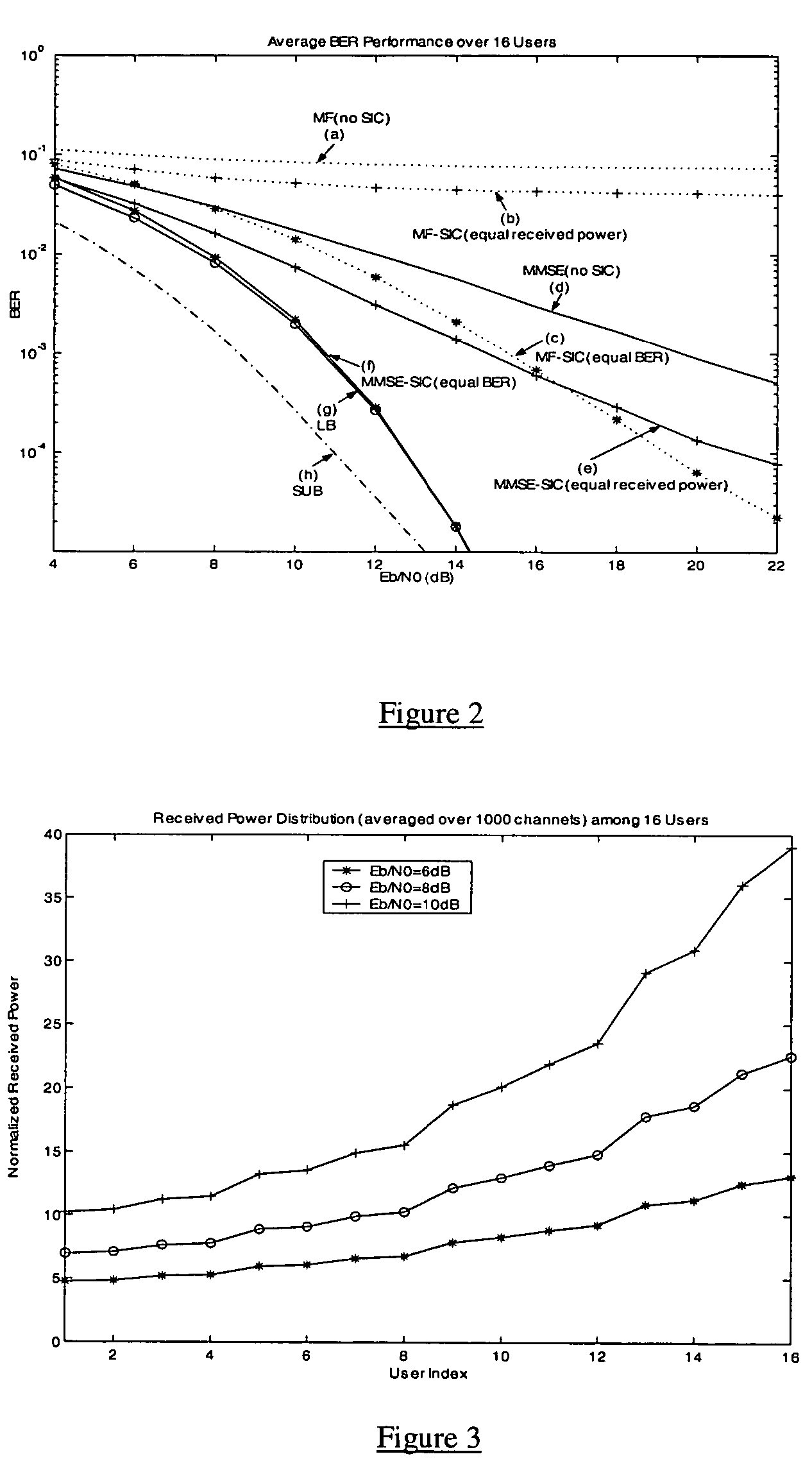Equal BER power control for uplink MC-CDMA with MMSE successive interference cancellation
a power control and mccdma technology, applied in the field of cdma systems, can solve the problems of cdma system limited performance, mf performance degrades quickly, sic is sensitive to received power allocation, etc., to achieve efficient suppression of multiple access interference, maximize sirs, and increase efficiency
- Summary
- Abstract
- Description
- Claims
- Application Information
AI Technical Summary
Benefits of technology
Problems solved by technology
Method used
Image
Examples
Embodiment Construction
[0011]In FIG. 1 a block diagram of the MC-CDMA system with MMSE-SIC receiver integrated with the equal BER PC is schematically depicted. Referring to the Figure, the method comprises the following steps:[0012](a) Based on the channel state information (CSI) obtained at the receiver, the “Equal BER Power Control” block is employed to calculate the transmit power allocation of different users. A successive algorithm is used, which searches the transmit power of different users under Equal BER criterion with a total transmit power constraint (the “Multi-carrier Channel Model” represents a concatenation of IDFT, wireless fading channel and DFT).[0013](b) With the assumption of slow fading channel, the calculated power allocation is fed back to the transmitter so that each user will transmit with the assigned power. (b denotes a vector including transmit symbols of all users.)[0014](c) At the receiver, the non-linear MMSE-SIC receiver is employed. (The block diagram of FIG. 1 shows a sta...
PUM
 Login to View More
Login to View More Abstract
Description
Claims
Application Information
 Login to View More
Login to View More - R&D
- Intellectual Property
- Life Sciences
- Materials
- Tech Scout
- Unparalleled Data Quality
- Higher Quality Content
- 60% Fewer Hallucinations
Browse by: Latest US Patents, China's latest patents, Technical Efficacy Thesaurus, Application Domain, Technology Topic, Popular Technical Reports.
© 2025 PatSnap. All rights reserved.Legal|Privacy policy|Modern Slavery Act Transparency Statement|Sitemap|About US| Contact US: help@patsnap.com



